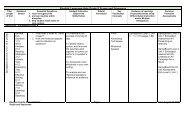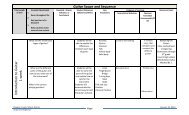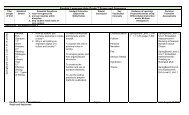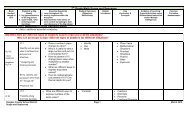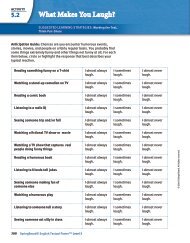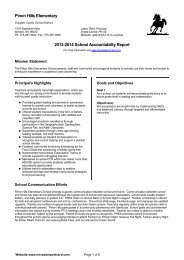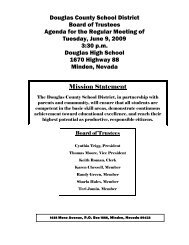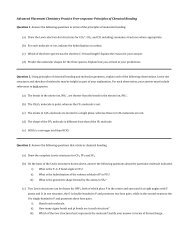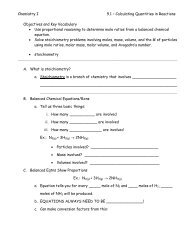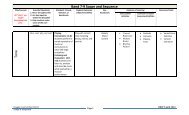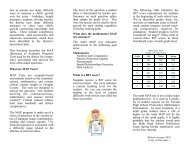DCSD Common Core State Standards Math Pacing Guide 1st Grade
DCSD Common Core State Standards Math Pacing Guide 1st Grade
DCSD Common Core State Standards Math Pacing Guide 1st Grade
Create successful ePaper yourself
Turn your PDF publications into a flip-book with our unique Google optimized e-Paper software.
<strong>DCSD</strong> <strong>Common</strong> <strong>Core</strong> <strong>State</strong> <strong>Standards</strong> <strong>Math</strong> <strong>Pacing</strong> <strong>Guide</strong><br />
<strong>1st</strong> <strong>Grade</strong><br />
a written method and explain the reasoning used.<br />
Understand that in adding two-digit numbers, one adds<br />
tens and tens, ones and ones; and sometimes it is<br />
necessary to compose a ten.<br />
5. Given a two-digit number, mentally find 10 more or 10<br />
less than the number, without having to count; explain<br />
the reasoning used.<br />
6. Subtract multiples of 10 in the range 10-90 from<br />
multiples of 10 in the range 10-90 (positive or zero<br />
differences), using concrete models or drawings and<br />
strategies based on place value, properties of<br />
operations, and/or the relationship between addition<br />
and subtraction; relate the strategy to a written method<br />
and explain the reasoning used.<br />
MD: Measurement and Data<br />
Measure lengths indirectly and by iterating length units.<br />
1. Order three objects by length; compare the lengths of<br />
two objects indirectly by using a third object.<br />
2. Express the length of an object as a whole number of<br />
length units, by laying multiple copies of a shorter<br />
object (the length unit) end to end; understand that the<br />
length measurement of an object is the number of<br />
same-size length units that span it with no gaps or<br />
overlaps. Limit to contexts where the object being<br />
measured is spanned by a whole number of length units<br />
with no gaps or overlaps.<br />
G: Geometry<br />
Reason with shapes and their attributes.<br />
3. Partition circles and rectangles into two and four equal<br />
shares, describe the shares using the words halves,<br />
fourths, and quarters, and use the phrases half of,<br />
fourth of, and quarter of. Describe the whole as two of,<br />
or four of the shares. Understand for these examples<br />
that decomposing into more equal shares creates<br />
smaller shares.<br />
2012-<br />
2013<br />
Page 6 of 6



